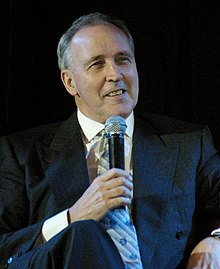Keating Government
|
The Honourable Paul Keating |
|
|---|---|

Keating in 2007
|
|
|
24th Prime Minister of Australia Elections: 1993, 1996 |
|
|
In office 20 December 1991 – 11 March 1996 |
|
| Monarch | Elizabeth II |
| Governor-General |
Bill Hayden William Deane |
| Deputy |
Brian Howe (1991–1995) Kim Beazley (1995–1996) |
| Preceded by | Bob Hawke |
| Succeeded by | John Howard |
The Keating Government refers to the former federal Executive Government of Australia led by Prime Minister Paul Keating of the Australian Labor Party from 1991 to 1996. The Government followed on from the Bob Hawke led Hawke Labor Government after Paul Keating replaced Hawke as Labor leader in an internal party leadership challenge in 1991. Together, these two governments are often collectively described as the Hawke-Keating Government. The Keating Government was defeated in the 1996 Australian Election and was succeeded by the Howard Coalition Government.
Paul Keating entered Parliament in 1969, aged just 25, when he won the seat of Blaxland for the Australian Labor Party. He went on to briefly serve as Minister for Northern Australia during the final days of the Whitlam Government in 1975. Keating then served an extended period in the Shadow Ministry through the period of the Fraser Government, culminating in his appointment to the Shadow Treasurer Portfolio in January 1983. Labor, led by Bob Hawke went on to defeat Fraser at the subsequent 1983 Australian Election and Keating began a long period of service as the nation's Treasurer. Keating had no tertiary qualifications and just three weeks experience as a minister.
Keating oversaw a number of important transitions in the Australian economy, including the floating of the Australian dollar and program of deregulation of the Australian economy: including privatisation of assets and reductions in tariffs. Keating became deputy Prime Minister following the retirement of Lionel Bowen in 1990. New economic challenges emerged in the wake of the 1987 New York Stock Market slump and the ALP lost ground at the 1990 Election. In a meeting at Kirribilli House, Hawke and Keating had discussed the possibility of Hawke retiring after the 1990 Election and when Hawke refused to do so, Keating began to publicly hint at dissatisfaction at Hawke's leadership.
By 1991 Australia was in deep recession. Keating famously argued that the downturn was a necessary correction: "the recession we had to have". By then the successful Hawke-Keating political partnership had fractured. On 3 June, Keating challenged Hawke for the leadership, lost the party ballot and went to the backbench. Six months later he again challenged Hawke, this time winning the leadership of the Labor Party and becoming the 24th Prime Minister of Australia.
...
Wikipedia
